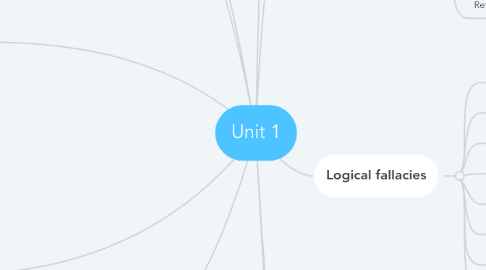Unit 1
by Marwan Amin


1. Thinking fallacies
1.1. Anecdotal
1.2. Conspiracy theory
1.3. Synchronicity
1.4. Misperception
1.5. Stereotyping
1.6. Faulty memory
2. Research ethics
3. Types of scientific literature
3.1. Primary research articles
3.1.1. Title
3.1.2. Abstract
3.1.3. Keywords
3.1.4. Background
3.1.5. Materials & Methods
3.1.6. Results
3.1.7. Conclusion
3.1.8. Acknowledgments
3.1.9. References
3.2. Secondary
3.3. Tertiary
4. Logic
4.1. Deductive reasoning
4.1.1. Syllogism
4.2. Inductive reasoning
5. The scientific community
5.1. Fact checker/ critic
5.2. Innovator/visionary
5.3. Watchdog/whistleblower
5.4. Cheerleader/taskmaster
6. Scientific jargon
6.1. Scientific thinking jargon
6.1.1. Demarcation VS. Falsification
6.1.2. Tentativeness
6.1.3. Pseudoscience
6.1.4. Cognitive biases
6.1.5. Confirmation bias
6.1.6. Validity VS. Soundness
6.1.7. Implicit VS. Explicit assumptions
7. The three pillars of science
7.1. Empirical evidence
7.2. Logical reasoning
7.3. Skepticism
8. Scientific methods
8.1. Make observations
8.2. Develop general theories
8.3. Gather data to test predictions
8.4. Think of interesting questions
8.5. Formulate a hypothesis
8.6. Develop testable predictions
8.7. Refine,alter.expand or reject hypothesis
9. Logical fallacies
9.1. Ad hominem
9.2. Appeal to authority
9.3. Appeal to popularity
9.4. Non sequitur
9.5. Post hoc
9.6. Slippery slope
9.7. Strawman
9.8. Appeal to ignorance
10. Types of experimental design
10.1. Correlational study
10.2. Naturalistic study
10.3. Survey
10.4. Experimental study
10.4.1. Types of variables
10.4.1.1. Independent variable
10.4.1.2. Dependent variable
10.4.1.3. Control variable

